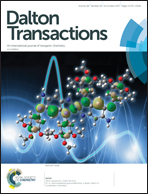Cold sprayed WO3 and TiO2 electrodes for photoelectrochemical water and methanol oxidation in renewable energy applications
Abstract
Films prepared by cold spray have potential applications as photoanodes in electrochemical water splitting and waste water purification. In the present study cold sprayed photoelectrodes produced with WO3 (active under visible light illumination) and TiO2 (active under UV illumination) on titanium metal substrates were investigated as photoanodes for the oxidation of water and methanol, respectively. Methanol was chosen as organic model pollutant in acidic electrolytes. Main advantages of the cold sprayed photoelectrodes are the improved metal–semiconductor junctions and the superior mechanical stability. Additionally, the cold spray method can be utilized as a large-scale electrode fabrication technique for photoelectrochemical applications. Incident photon to current efficiencies reveal that cold sprayed TiO2/WO3 photoanodes exhibit the best photoelectrochemical properties with regard to the water and methanol oxidation reactions in comparison with the benchmark photocatalyst Aeroxide TiO2 P25 due to more efficient harvesting of the total solar light irradiation related to their smaller band gap energies.

- This article is part of the themed collection: The Role of Inorganic Materials in Renewable Energy Applications

 Please wait while we load your content...
Please wait while we load your content...